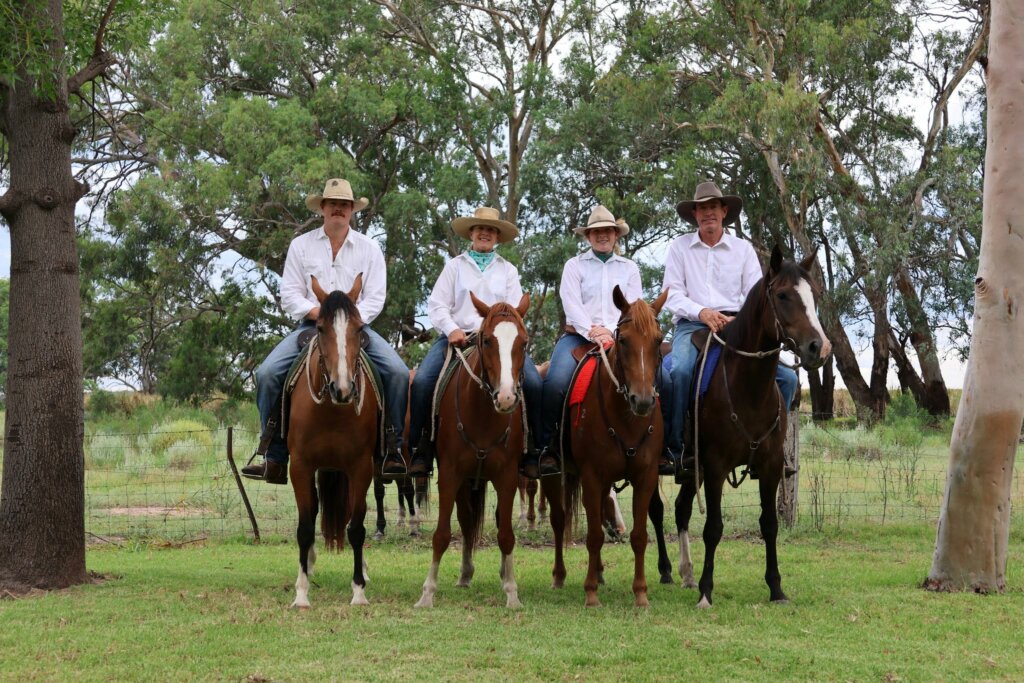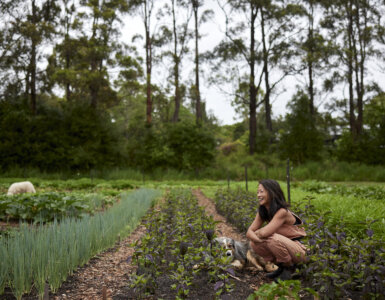The Macquarie Marshes, 240km north-west of Dubbo in northern NSW, are listed by the Ramsar Convention as Wetlands of International Importance, being one of the most critical nesting grounds for Australian waterbirds. Over 500,000 birds, including the threatened Australasian Bittern and Australasian Painted Snipe, can be found here in a good season when the air rings with a cacophony of calls.

Best of both worlds
The Marshes are also home to Garry and Leanne Hall who run 800 Angus breeding cows, supplying steers to domestic and export markets, on their 6400ha property The Mole. It may seem contradictory to have a commercial farming operation in such a sensitive environment, but the Halls are inextricably tied to the health of the wetlands and are, perhaps, their biggest advocate. As Garry says: “Fat ducks equal fat cattle”.
Mustering on The Mole is a wet business as horses and cattle plunge through head-high reed-beds as endangered bird species wing overhead. Children Jet (19) and Teague (22), who represent the fifth generation of Halls here, are often on-hand saddling one of 20 horses that the property breeds.

“The cattle will happily feed in the water,” Leanne says, “but moving them between paddocks and the yards involves swimming cattle and horses across channels and the river. You couldn’t do what we do on a bike.”
Fat ducks equal fat cattle.
NSW National Parks cover 12% of the Marshes with the remainder being managed by private landholders such as the Halls, who have part of The Mole managed under the Ramsar Convention.
Garry takes his environmental responsibilities seriously. “We graze our cattle in the Marshes under the wise use principal,” he says. “That means we sustainably use the wetlands for the benefit of humanity in a way that is compatible with maintenance of the natural properties of the ecosystem. It also means our farming is most productive when the landscape is at its best.”
The Halls have long fought for the Marshes. They challenge over-allocation of water upstream as it is released from Burrendong Dam and they champion sustained environmental flows of the same water.

They work with Professor Richard Kingsford, a river ecologist and conservation biologist from the University of NSW and they conduct government-backed research studies into the positive impacts of cattle grazing the Marshes. In recent times they have argued against the granting of an exploration licence that would see mineral drilling in this sensitive environment.
While droughts and fires have threatened the Marshes in the past, this year is a good season. “It looks absolutely stunning,” Leanne says. “It’s pretty unique going into spring with the Marshes saturated and with the expected September environmental water release I think the Marshes are poised for a significant breeding event.”
I think the Marshes are poised for a significant breeding event.
The Halls have added tourism to their farming operation with the purchase and rejuvenation of Willie Retreat, a campground set in the Marshes that attracts school and university groups, bird-watchers, star-gazers and all those looking for a place to reconnect to nature. Willie allows the Halls to share their love of the Marshes and its waterbirds with others.
Birds of a feather
“I have many favourites but I like the magpie geese because they are so photogenic and the brolgas with their eerily beautiful calls,” Leanne says. “But I am also excited to see the Painted Snipe this season. Snipes, and there are only about 300 of them in the country, have been tagged in Victoria and we hope to see them here on their way to Queensland.”

Garry’s favourite bird is the Glossy Ibis with its iridescent colours on black feathers and its petite green eggs. “They fly in formation and drop from the air as one and when they do it is like they are breaking the sound barrier. If you’re fortunate enough to experience one of these events, you’ll never forget it.”
The Hall family is passionate about their cattle and agriculture but equally passionate about their birds and the Macquarie Marshes. “We believe there is harmonious interaction to be had between grazing and landscape,” Leanne says.







































Add comment